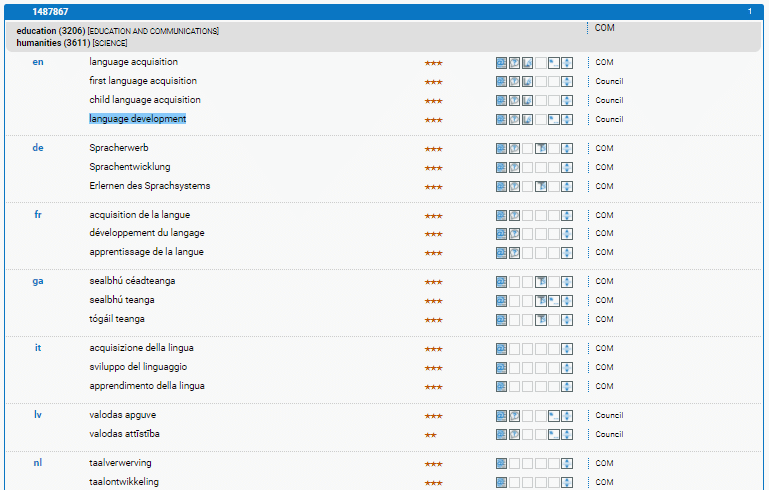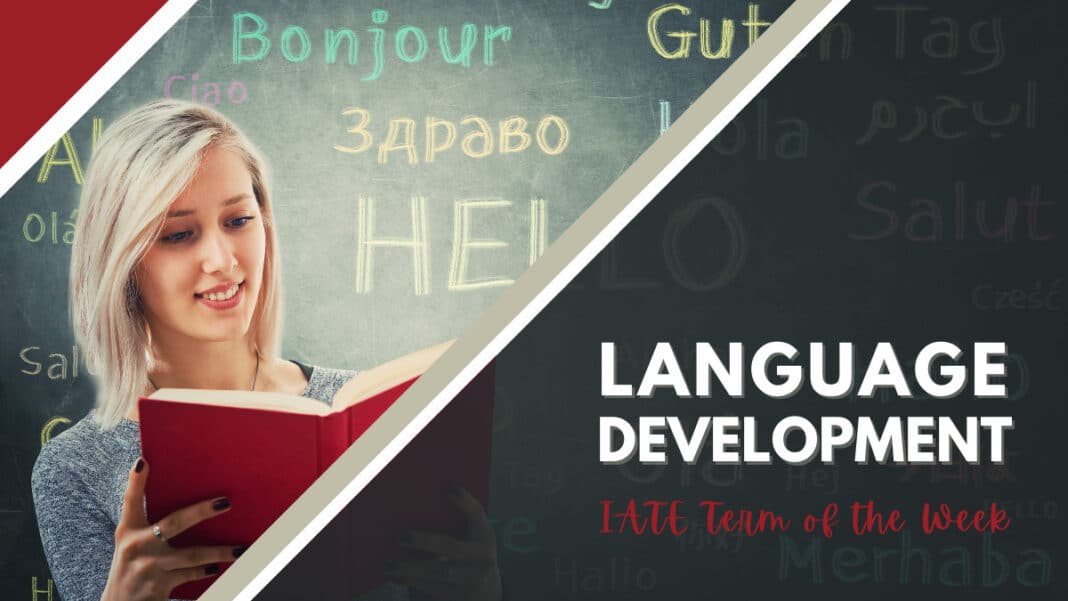On September 26th, Europe celebrates the European Day of Languages. This celebration is rooted in 2001 when the Council of Europe decided to nominate that year as the European year of Languages, wishing to attribute the respect and grace to its multilingual profile. Within the framework of this celebration the idea for an annual day on which we can all remember and commemorate the varied and rich linguistic identity of Europe was conceived. Based on this campaign, the Committee of Ministers decided to establish the ELD (European Language day) as an annual event which would provide the opportunity to remind Europe of numerous reasons why the European linguistic and cultural diversity deserves unanimous salutation and recognition.
This time our IATE Term of the week is devoted to a definition closely related to the European Language Day. ‘Language Development’ is the definition used by linguists to define the way in which children come to understand and communicate language during their early childhood. Language is an integral part of our individual and social identity and the way it is developed keeps attracting increased interest on behalf of linguists and all those involved in the language acquisition process.

There are different ideas, generating different educational approaches and systems focusing on teaching languages in a multilingual or bilingual frame, all originating from different beliefs on how the language acquisition is achieved. When children first meet their speaking community, they go through 4 different stages as far as their language development process is concerned. The babbling stage, the Holophrastic or one-word stage, the two-word stage and the Telegraphic stage.
This primary linguistic development advances during the evolution of each human being. According to Krashen and Terrell (1983), every new language that children start acquiring and learning throughout their broad learning experience either within a specifically educated framework like a school or within a multilingual social environment affecting their linguistic identity, moves through five (5) predictable stages : Preproduction, Early Production, Speech Emergence, Intermediate Fluency and Advanced Fluency.
There is no doubt that language development is impacted by a number of factors, including internal and external factors. There is also no doubt that the nowadays’ global society and its constant arising demands generate more and more interest on how we can affect and improve the language development process since our life keeps asking for multilingual entities.
Every new idea and research finding are more than welcome since the whole world shares the conviction of the Council of Europe that “linguistic diversity is a tool for achieving greater intercultural understanding and a key element in the rich cultural heritage of our continent”.
Sources
Council of Europe, “September 26-European Day of Languages”, [ONLINE], Available at https://www.coe.int/fr/web/portal/26-september-european-day-of-languages, Accessed 23 September 2020
Definition Net, “Language Development”, [ONLINE], Available at https://www.definitions.net/definition/language+development, Accessed 23 September 2020
Rudd L.C., Kelley H.M. (2011) Language Development. In: Goldstein S., Naglieri J.A. (eds) Encyclopedia of Child Behavior and Development. Springer, Boston, MA. https://doi.org/10.1007/978-0-387-79061-9_1609
Words in Motion Pathology, “Language Development” [ONLINE], Available at http://www.wordsinmotionspeech.com/language-development.html, Accessed 23 September 2020
 Written by Maria Papamargariti, Greek and English Philologist, writer in the field of children’s literature.
Written by Maria Papamargariti, Greek and English Philologist, writer in the field of children’s literature.

